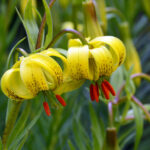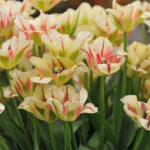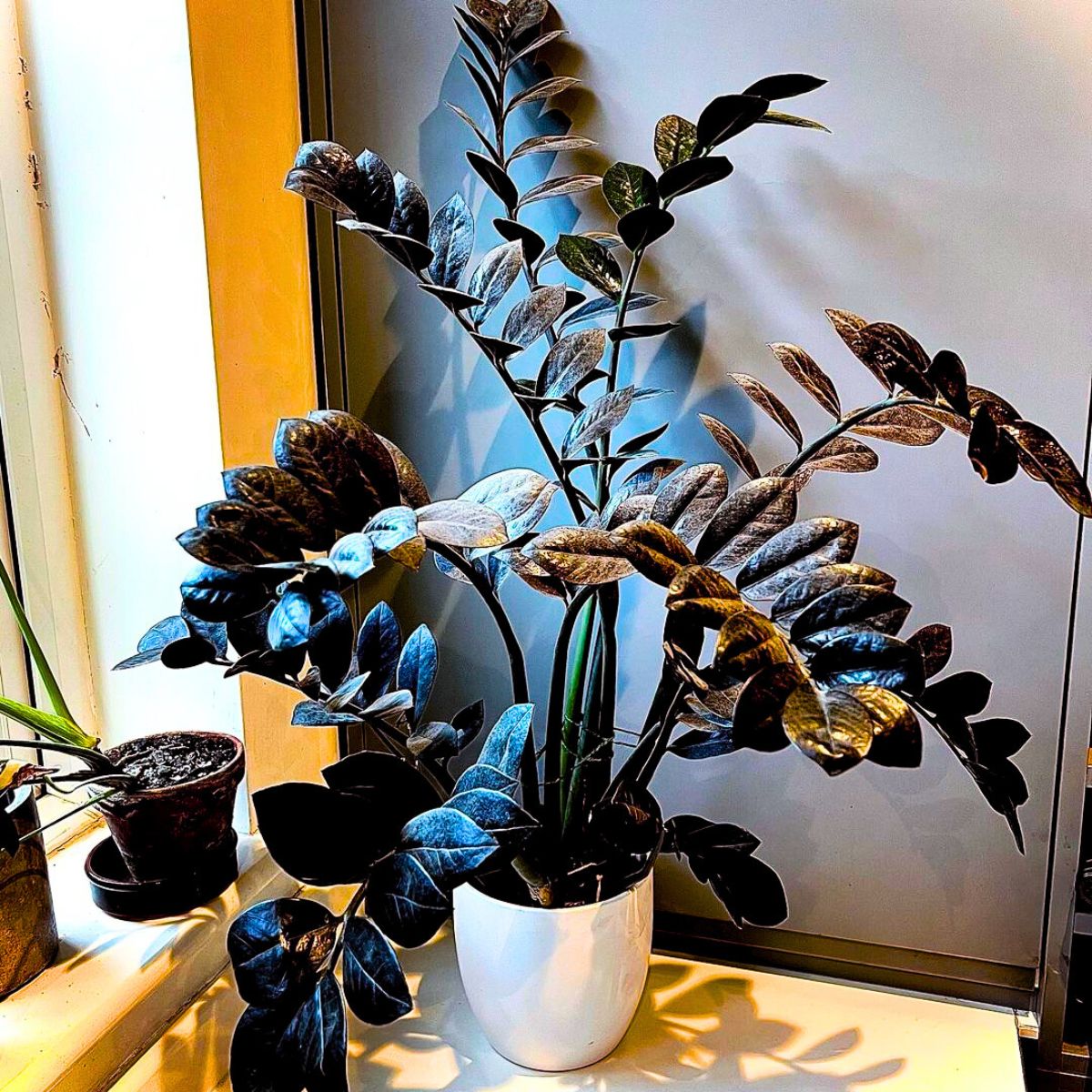Delving into the world of horticulture offers endless opportunities to experiment with color, texture, and form. Among the most intriguing options for garden aficionados and interior design enthusiasts alike are the best black plants, whose dark and dramatic hues can transform any space into an area of enchanting mystery and sophisticated style.
While the quest for true black in nature might be quixotic, the plants that come closest to this shade are no less striking. They captivate the eye, offering a bold contrast to the typical greenery found in most gardens and indoor environments. This article will explore some of the finest selections that can introduce dark and dramatic colors to your space.
Why choose black house plants?
The allure of black houseplants lies in their ability to create a focal point that draws the eye. These plants stand out against lighter backgrounds, highlighting their architectural forms and the velvety depth of their leaves.
Moreover, black plants have the unique ability to bring about a sense of balance. By pairing them with lighter, brighter flora, you can create a dynamic interplay of contrasts that elevates the overall design of your space.
Furthermore, black houseplants are often celebrated for their sophisticated aesthetic. They can seamlessly integrate into a variety of interior designs, from modern minimalism to more eclectic and vintage styles, making them a versatile choice for any home.
Choosing the right black plants can also have a practical side. Many varieties are known for their hardiness and ease of care, making them suitable for both seasoned gardeners and novices alike.
In the world of design, black is a color that symbolizes elegance and mystery. Integrating black plants into your home can thus add a layer of intrigue and chic sophistication to your living space.
What style of gardens will suit black plants?
Black plants are incredibly versatile and can fit into a range of garden styles. They are particularly effective in contemporary gardens, where their dramatic appearance can be used to create a modern, edgy look.
Tropical gardens also benefit from the addition of black flora, as their lush, dark foliage can mimic the rich diversity found in a rainforest canopy.
For those who favor a gothic or Victorian aesthetic, black plants can accentuate these themes, offering a darkly romantic ambiance that complements the overall design.
In rock or Zen gardens, black plants can serve as a striking backdrop for more subdued green plants and pale stones, highlighting the minimalist beauty of these spaces.

Lastly, cottage gardens, known for their informal mix of flowers, can also accommodate black plants. Here, they can add depth and serve as a striking contrast to the riot of colors typically found in such settings.
What other colours work with black plants?
When incorporating black plants into your design, consider colors that complement or contrast their deep tones. Here are some color pairings:
- White and silver plants can provide a striking contrast, making the dark foliage of black plants stand out even more.
- Warm hues like reds, oranges, and yellows can create a vibrant and energizing palette when placed next to black plants.
- Pale blues and purples offer a soothing and harmonious look, softening the boldness of black foliage.
- Lime green or chartreuse plants next to black varieties can produce a lively and eye-catching combination.
It’s all about creating a balance that suits your aesthetic preferences and the mood you want to convey in your space. Experimenting with different color schemes can unlock the full potential of black plants within your garden or home interior.
 Types of lilies: 16 gorgeous varieties to consider
Types of lilies: 16 gorgeous varieties to considerBest black house plants to add to your space
When searching for black house plants to elevate your indoor space, there are several varieties that top the list for their beauty and ease of care:
- Black Mondo Grass – This grass-like plant offers a subdued elegance with its blade-shaped leaves and works well in both containers and as ground cover.
- Black Philodendron – With its large, dark leaves, this plant is a statement piece that can thrive in a variety of indoor conditions.
- Black Velvet Alocasia – Known for its velvety texture and striking appearance, this plant requires a bit more care but is well worth the effort.
- Black Hollyhock – Although typically an outdoor plant, hollyhocks can be brought indoors and add a touch of cottage charm to your space.
- Black Calla Lily – This elegant flower is a classic choice for adding a touch of sophistication to any room.
Each of these plants offers a unique way to integrate the beauty of black foliage into your home. They can stand alone as singular accent pieces or be grouped together for a more complex, layered effect.
Rare black houseplants: adding uniqueness to your collection
For the plant collector in search of something truly unique, there are several rare black houseplants that can add an exotic touch to your collection:
The Black Velvet Alocasia is a coveted choice for its distinct texture and appearance. Its deep, dark leaves resemble the luxurious fabric after which it is named, making it a prized possession for any collector.
Black Raven ZZ Plant is another rare variety that is both striking in appearance and incredibly easy to care for, thriving even in low-light conditions.
For those interested in succulents, the Haworthia ‘Black Gem’ offers dark, almost black leaves with a glossy finish that can add a modern touch to any space.
Each of these rare plants can serve as a conversation starter and a source of pride for plant enthusiasts keen on diversifying their indoor gardens with unusual and captivating specimens.
Keeping your black houseplants healthy
To ensure the vitality of your black plants, consider the following care tips:

Most black plants prefer bright, indirect light to maintain their color and prevent fading. Direct sunlight can sometimes be too harsh, leading to scorched leaves.
Watering should be done with care, as overwatering can lead to root rot. Allow the soil to dry out between waterings, especially for succulents and other drought-resistant varieties.
Humidity levels can also play a role in the health of your black plants, with some varieties preferring a more humid environment—consider misting them or placing a humidifier nearby.
Fertilizing is another important aspect of care, with many black plants benefiting from regular feeding during their growing season.
Finally, keeping the leaves clean from dust will not only improve their appearance but also aid in photosynthesis, contributing to the overall health of the plant.
Large black house plants: making a bold statement
For those looking to make a bold statement, large black house plants are the way to go. Varieties such as the Black Coral Snake Plant and the ‘Raven’ ZZ Plant can grow to impressive sizes, providing a commanding presence in any room.
 Cheap DIY garden path ideas: 10 ways to build a path for less
Cheap DIY garden path ideas: 10 ways to build a path for lessWhen choosing large black plants, ensure they have enough space to grow. These plants often become focal points in interior design, so positioning them in areas where they can be fully appreciated is key.
Large black plants can also serve as natural air purifiers, with many varieties known for their ability to filter out toxins and improve indoor air quality.
Due to their size, these plants may require more frequent watering and feeding than their smaller counterparts. However, the impact they have on the aesthetics of a space makes the additional care worthwhile.
Caring for large black house plants often involves regular pruning and repotting to maintain their shape and encourage healthy growth.
Introducing a touch of the dark and exotic to your home or garden can be as simple as finding the right black plant to suit your style. Below is a video highlighting some of the most dramatic black plants that can be added to your collection:

Frequently Asked Questions About Black Plants
Why are black plants so popular?
Black plants have gained popularity due to their unique and sophisticated appearance. They offer a visual break from the more common green plants and can be used to create striking contrasts in gardens and interior spaces.
Their rarity also adds to their allure, making them a sought-after item for collectors and garden enthusiasts who wish to stand out with their plant choices.
How do you care for black houseplants?
Caring for black houseplants involves providing them with the right amount of light, which is usually bright, indirect sunlight. Overexposure can lead to fading of their dark hues.
Proper watering is also crucial; many black plants prefer well-draining soil and should not be overwatered. It’s important to let the soil dry out somewhat between waterings.
What are the best black plants for indoors?
Some of the best black plants for indoor settings include the ‘Raven’ ZZ Plant, Black Velvet Alocasia, and the Black Coral Snake Plant. These varieties are not only beautiful but also adaptable to indoor environments.
Can black plants grow in shade?
Yes, many black plants can grow in shade, though the level of shade tolerance varies by species. It’s important to research the specific light requirements of each plant.
What is the significance of black plants in design?
In design, black plants are significant for their ability to create visual depth and interest. They can anchor a space and serve as a backdrop for other design elements.
The inclusion of black plants in your home or garden can create a distinctive and dramatic effect that enriches the visual palette and atmosphere of your space. Whether you’re an experienced gardener or a newcomer to the world of plants, black varieties offer intriguing possibilities for interior and exterior design alike.
 Types of tulips: 21 stunning varieties for your garden
Types of tulips: 21 stunning varieties for your garden

This post is such a cool dive into the world of black plants! I never realized how much impact they could have in a space, both visually and in terms of design versatility. The idea of pairing them with lighter colors for contrast or using them in a modern or gothic-themed garden is inspiring. It’s also great to learn that some of these plants are easy to care for, making them accessible even for those of us who aren’t expert gardeners. Thanks for sharing these insights—I’m definitely considering adding a few of these to my collection!
This post is such a cool dive into the world of black plants! I love how you highlighted their versatility and the unique vibe they bring to any space. I’ve been looking to spice up my indoor garden, and the Black Philodendron sounds like the perfect statement piece. Thanks for the care tips too—they’re super helpful for a plant newbie like me!